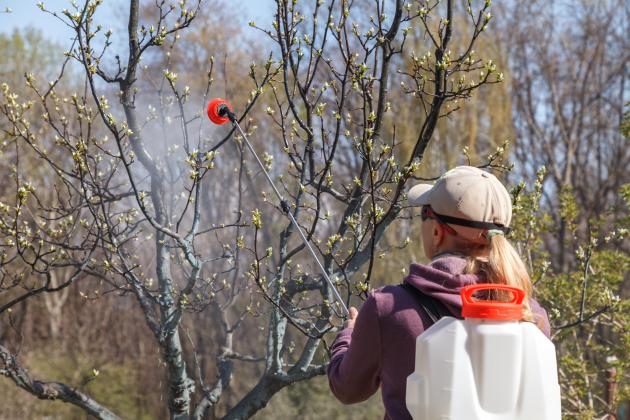Rachael Brooke - Phillips-Rooks District Extension Agent, Agriculture and Natural Resources
It can be a challenge to know how to spray fruit trees for pest control. Spray schedules will vary depending on whether the trees have fruit or not. Here are some hints on what to spray this year for our most common fruit trees.
Peaches, nectarines and apricots: Often late frosts prevent fruit set on these trees. Trees that are in full bloom, become much more sensitive to frost damage than those with buds still closed. Temperatures at 28 degrees and lower will harm buds that are in full bloom. If there will not be any fruit, there is not any need for being on a spray schedule. If there is fruit, use a product that contains captan or myclobutanil (Immunox, Fungi-Max, Fertilome F-Stop Lawn and Garden Spray) from now until about two weeks before harvest. Spray about every 10 days.
Cherries: We often have good fruit on cherries without spraying. However, a wet period as fruit ripens can lead to problems with brown rot. Myclobutanil (Immunox, Fertilome F-Stop Lawn and Garden Spray, Fungi-Max) or Captan will give good protection. Cherry fruit fly may attack the cherries with the maggot causing damage to the fruit. Malathion (check label), Bonide Fruit Tree & Plant Guard or Sevin can be used for control.
Pears: Pears are often able to escape damage without spraying. If trouble does arise, use the same recommendations given for apples.
Apples: Apples are the crop most in need of a spray schedule. Unless you have disease-resistant trees, cedar-apple rust is a perennial problem. The larvae of the codling moth is the insect most likely to damage fruit. Control can be a challenge due to changing labels and an extended spray season.
For more information, please contact the local K-State Research and Extension Office.
K-State Research and Extension is an equal opportunity provider and employer.

